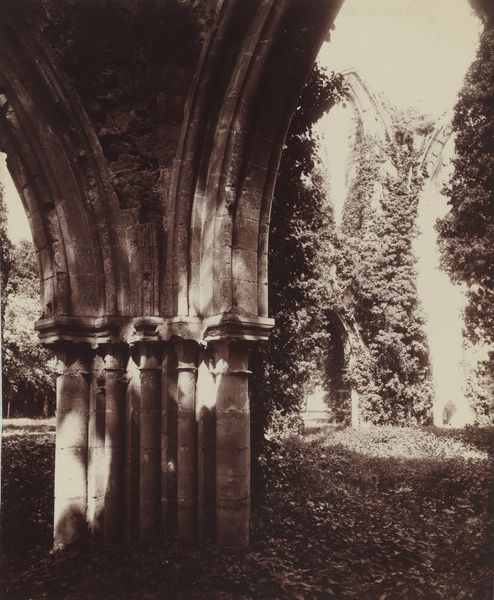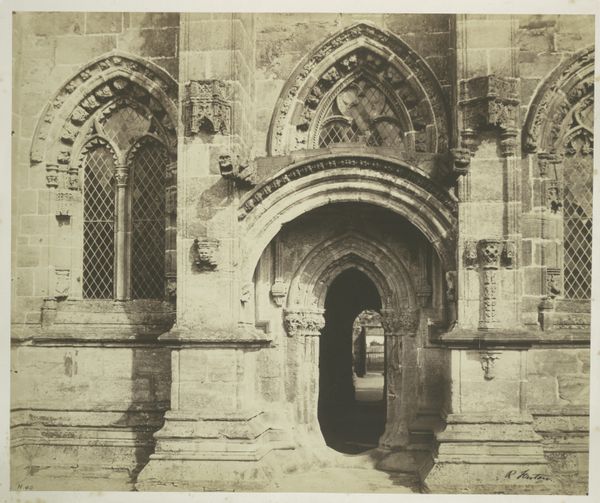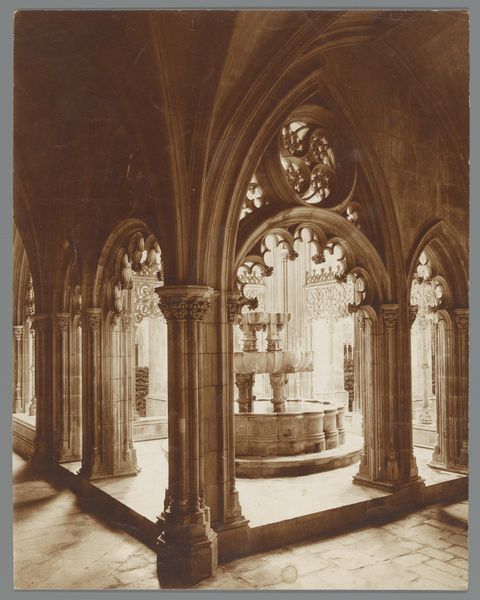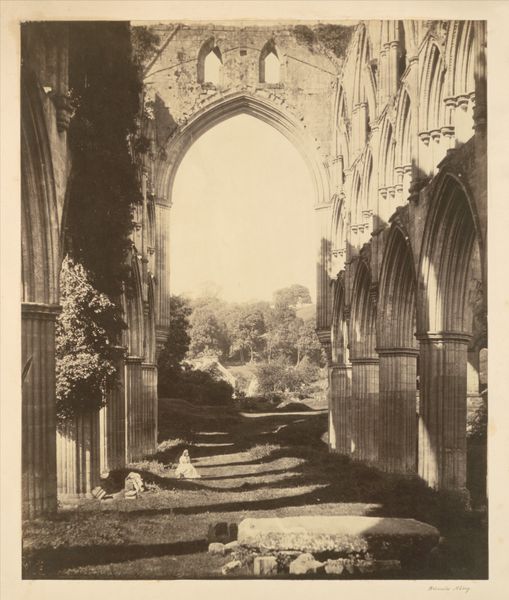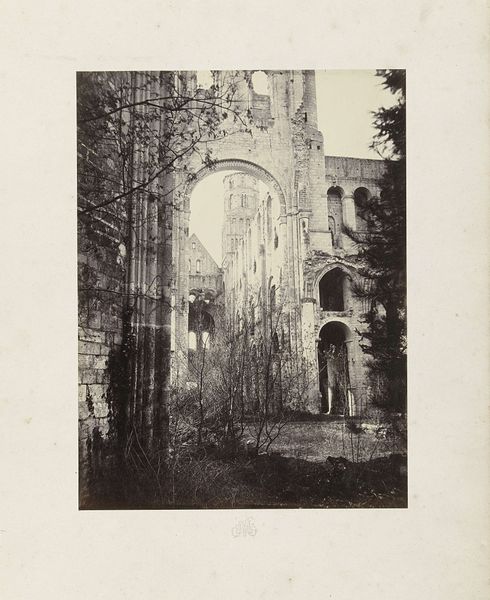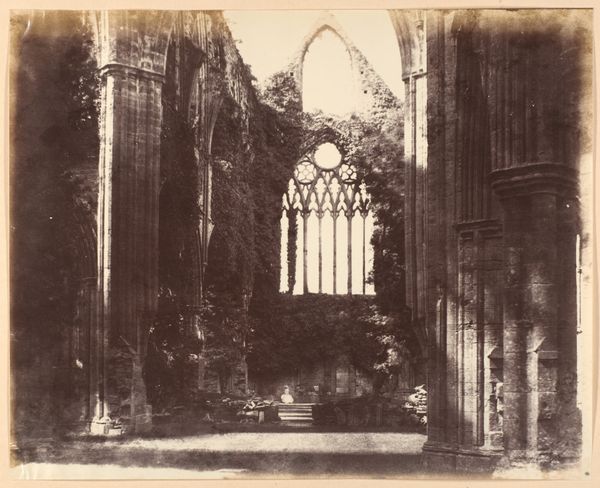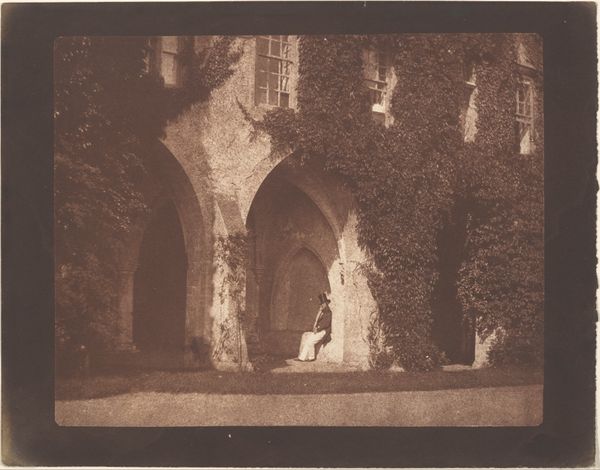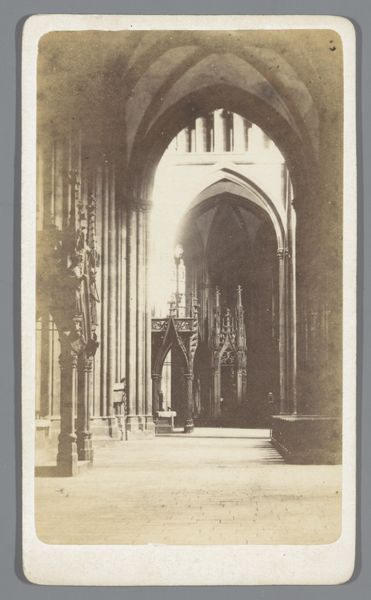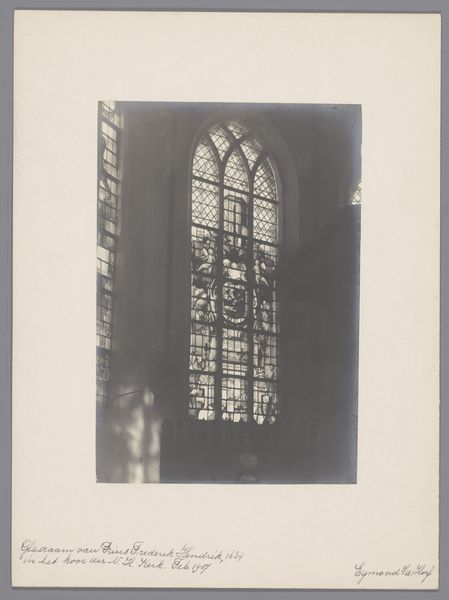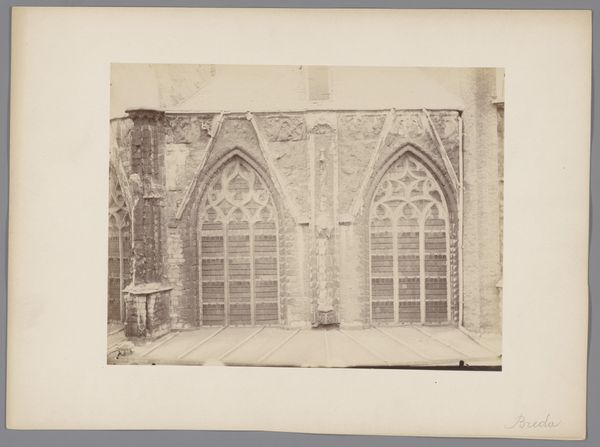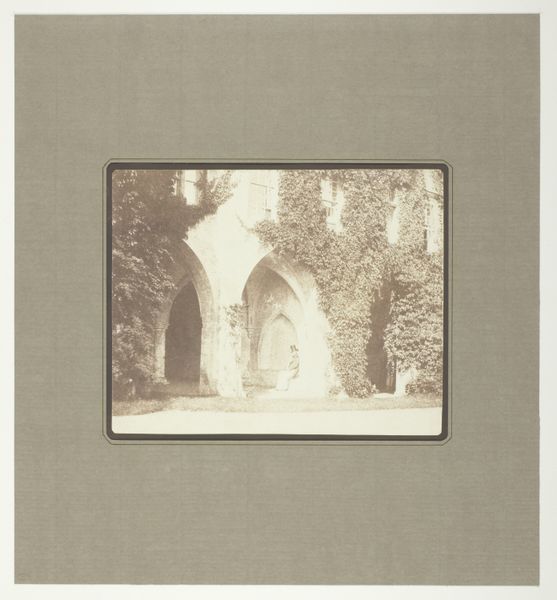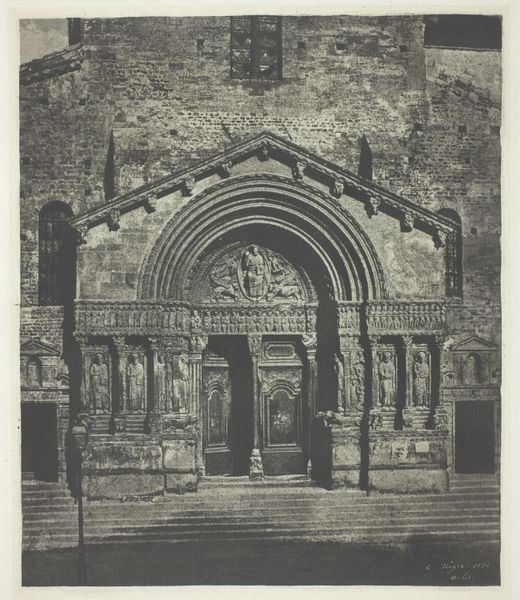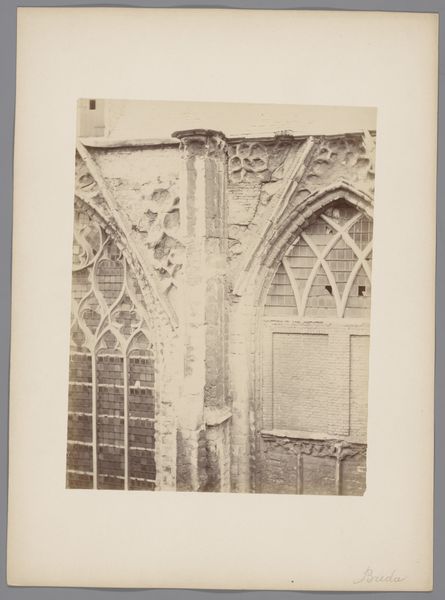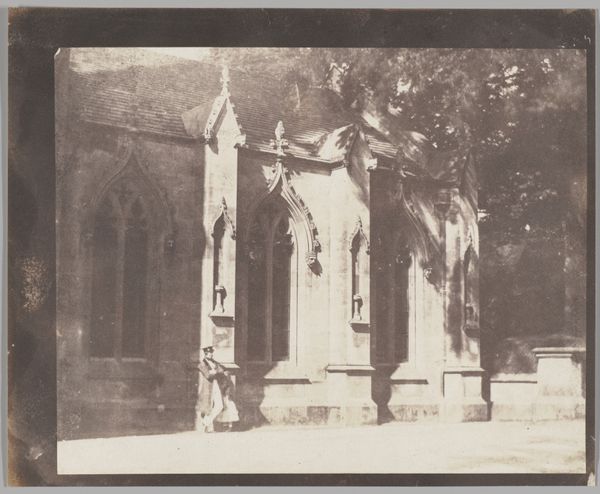
Dimensions: Image: 29.5 x 36.5 cm (11 5/8 x 14 3/8 in.) Mount: 48 x 61.5 cm (18 7/8 x 24 3/16 in.)
Copyright: Public Domain
Editor: This is Roger Fenton's "Rievaulx Abbey, the High Altar," taken in 1854. It's a gelatin-silver print showing the ruins of an abbey, and I'm immediately struck by how romantic and almost melancholic it feels. What story do you think Fenton is trying to tell here? Curator: Fenton’s choice of subject and his technique place this photograph firmly within a 19th-century fascination with ruins and Romanticism. But I'm interested in its specific historical context. How might the public consumption of these kinds of images reinforced particular narratives about England's past, and perhaps even its present identity? Editor: So it's not just about the beauty of the ruins themselves, but also about what those ruins represented to people at the time? Was there something particular about abbeys and their place in the public imagination? Curator: Precisely! The dissolution of the monasteries under Henry VIII was a pivotal moment, and the ruins became potent symbols of a lost past, often interpreted through a Protestant lens as a rejection of Catholic excess. The accessibility afforded by photography allowed these ruins to be widely circulated and consumed. Consider how this contrasts with earlier, more exclusive painted views. Who was now able to engage with these images, and how might that affect their interpretation? Editor: That's fascinating! So, photography democratized access to these powerful symbols, and people could then start to connect to history differently? This photo isn't just about remembering; it is about inventing or shaping our understanding of history. Curator: Exactly. Fenton wasn’t simply recording a scene; he was participating in the construction of a national narrative through imagery. The success and value of a piece such as this relied heavily on the way Fenton distributed this and similar images throughout his public art exhibitions. Editor: Wow, that provides so much insight. It's like the abbey is a stage, and Fenton is directing the audience's view of history itself. Thank you.
Comments
No comments
Be the first to comment and join the conversation on the ultimate creative platform.
